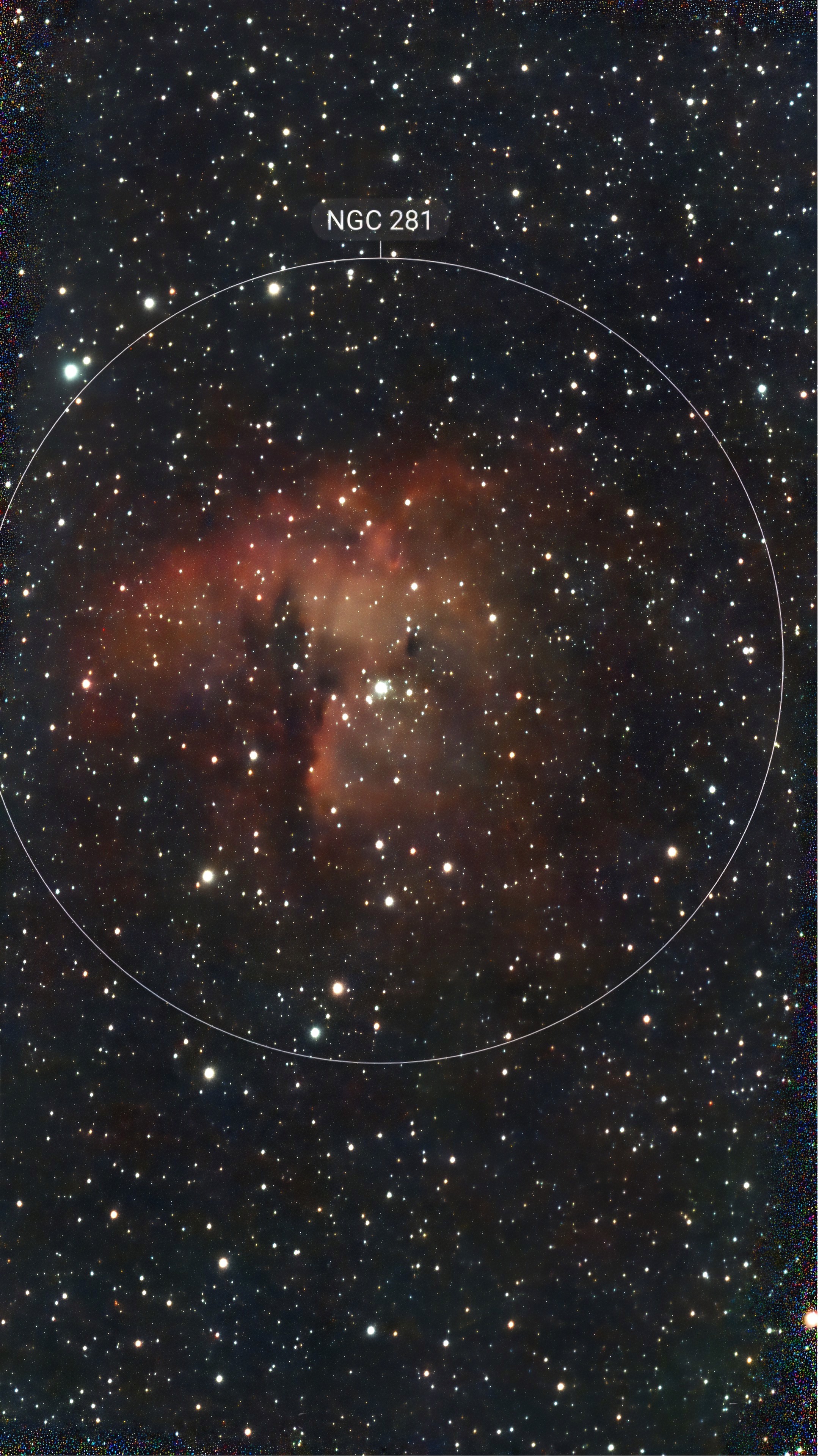starnet59 To illustrate my point, this is NGC 281, the Pacman Nebula, 36 minutes of successfully stacked 10-second exposures that required 45 minutes (so 80% stacking efficiency, which is great), all taken before SeeStar would let me even start a plan. The FIT image has been processed in GraxPert, which is free (AI background removal, some AI noise removal and stretching), then AI upscaled by 2x to 2160x3840 and more AI noise removing using Aiarty Image Enhancer, which is not free. I am not using ZWO's AI Denoiser because it does not work on the FIT file, only on the much lower quality JPG and on top of that it is way too aggressive. The overlay has been created by subtracting two JPG files saved by SeeStar with and without overlay (I take this opportunity to ask again ZWO to automatically save a PNG overlay file together with the FIT and JPG image files), which was then also upscaled 2x with Aiarty and superposed over the final image:

My point is that if you have a clear night you lose one hour in the evening and another one in the morning because of the hard stops hardcoded in the planning software. The image above was captured fully outside the range allowed by the SeeStar planning mode. Both evening and morning planning start and stop limits should be relaxed by one hour.